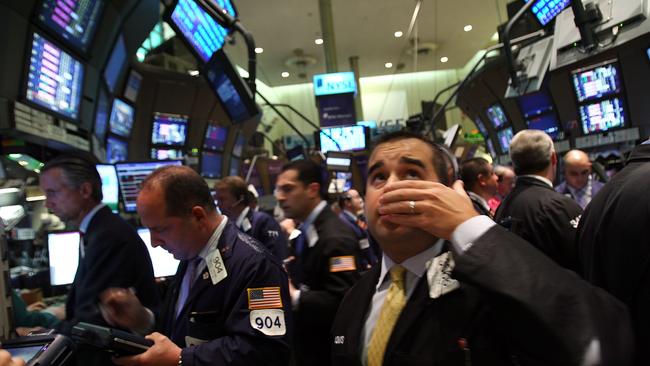
Be warned. We are about to enter the most dangerous time of the year for global markets and volatility will be the name of the game for the next few months.
US share investors – who are heading into late autumn – have a tendency to lose confidence at this time of the year. The market’s version of “winter is coming” has triggered many of the most disturbing market reversals.
In fact, the collapse of investment bank Lehman Brothers – which triggered the Global Financial Crisis – arrived at this time 14 years ago, September 15.
Seasoned investors will remember Black Monday – October 19, 1987 – when the market dropped 22 per cent in a single session. Historians will also recall the most famous reversal of all – the Great Crash of 1929 which hit on October 28.
The one day sell off on Wednesday – the worst in the US since June 2020 – was in response to no more than a teeny 0.1 per cent lift in headline inflation. The worse-than-expected figures did not shock economists but it did shock traders who have been betting that inflation was ready to drop and that, in turn, markets would benefit from the prospect of lower interest rates next year.
Yet as the ANZ’s David Plank had suggested this week, the prospect of lower rates in early 2023 is in reality “extremely low”.
Wall Street futures did a U-turn during Wednesday’s trading hours in Australia which meant the ASX haemorrhaging stopped late session when the market had dropped nearly 3 per cent.
If US-based selling resumes later this week, local traders will follow lemming-like without the slightest hesitation.
The only reason to assume the share market will not endure a serious setback in the weeks ahead is the simple fact they are already much lower for the year. The ASX is down more than 10 per cent year to date, the Dow Jones down almost 15 per cent. Many of the market’s smarter strategists did warn the strong returns seen in July were no more than a blip on the screen as trading readjusted to the games fund managers play before the end of the tax year.
In fact, July looked very promising indeed with your shares-dependent super fund probably lifting 3 per cent and regaining all it lost in 2021. Unfortunately, that rebound now looks like an illusion – your fund has probably lost perhaps 0.5 per cent for August and September is not looking too good either.
Similarly, local strategists had been warning that local trading over the last week seemed to be oblivious to US concerns – that concern is now resolved.
Defensive blue chips are again back in fashion and professional traders remain extremely wary of growth stocks – that’s why tech stocks bore the brunt of Wednesday’s sell off.
Inside the market, the old adage of “Don’t fight the fed” is now the dominant mantra. In other words, it is impossible to expect a rising market if the Federal Reserve is going through a phase of trying to cool its own domestic economy by raising rates. Rate rise projections, both in the US and in our own market, were immediately racked up after the latest bad news on inflation.
For long term sharemarket investors, these sell-offs may be seen as a buy signal for certain stocks that are rarely offered at a discount. For example, if we take a look at the bakers dozen of stock recommendations just released by Wilson Asset Management, it is household names such as CSL, Insurance Australia Group, Qantas and REA Group that are being recommended – the very opposite of the tech and buy now, pay later hopefuls that fuelled the market upsurge a year ago.
The fund manager also identifies some stocks where the numbers might be attractive, but that’s about it. Santos – still battling claims of greenwashing – is there. Santos is up just 16 per cent over the last year but its arch rival Woodside has managed twice that leap at 42 per cent.
So too is the Star Entertainment and its management regime which has just been branded as unsuitable to run a casino. Star down is 30 per cent this year.





